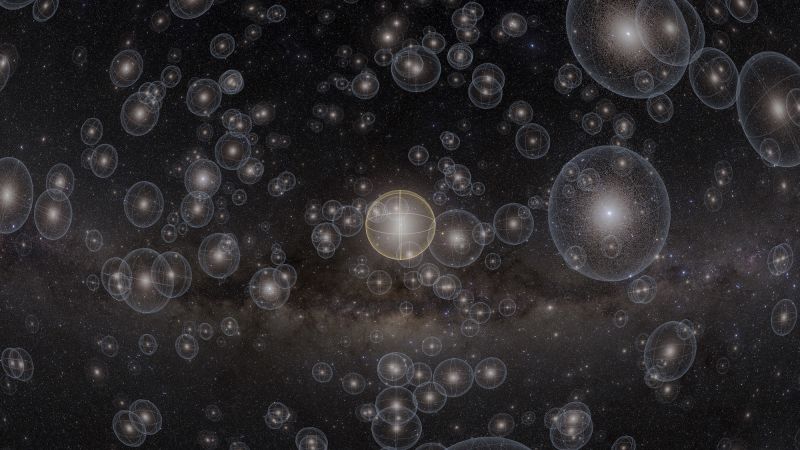
NEW YORK CITY – An accidental discovery may redefine our understanding of the Oort Cloud, a mysterious structure at the edge of our solar system.
Breaking: Unseen Spiral Structure Revealed
During the preproduction of “Encounters in the Milky Way,” a show that debuted Monday at the Hayden Planetarium in New York City, a surprising spiral structure was projected within the Oort Cloud. This revelation occurred while curators were testing a scene depicting Earth’s celestial neighborhood.
“We hit play on the scene, and immediately we saw it. It was just there,” recalled Jackie Faherty, an astrophysicist at the American Museum of Natural History and the curator of the show.
Immediate Impact
The Oort Cloud, long believed to be spherical, is a vast expanse of icy bodies orbiting the sun at a distance 1,000 times greater than Neptune. The unexpected spiral, which resembles a spiral galaxy, has intrigued scientists and animators alike.
Key Details Emerge
To investigate further, Faherty contacted David Nesvorny, a scientist with the Southwest Research Institute in Boulder, Colorado, and an expert on the Oort Cloud. Nesvorny confirmed the spiral’s presence using data from his simulations, which he later published in The Astrophysical Journal.
“We didn’t create it — David did,” Faherty said. “This is David’s simulation, and it’s grounded in physics.”
Industry Response
Nesvorny initially suspected the spiral was an artifact in the data visualization. However, upon reviewing his data, he confirmed the spiral’s existence. “Weird way to discover things,” he noted, reflecting on the accidental nature of the find.
By the Numbers
- The Oort Cloud extends up to 1.5 light-years from the sun.
- It is composed of icy bodies fewer than 60 miles in diameter.
- NASA’s Pleiades Supercomputer was used for weeks of simulations.
What Comes Next
While the Vera C. Rubin Observatory in Chile may aid in observing the Oort Cloud, it is unlikely to provide a comprehensive view of the spiral due to the number of objects required for visualization.
“It therefore seems unlikely to be a clearly detectable structure,” noted Simon Portegies Zwart, a professor of numerical star dynamics at Leiden University.
Background Context
The Oort Cloud was first proposed in 1950 by Dutch astronomer Jan Oort. It is considered the most distant region of our solar system, containing remnants from its formation. These icy bodies are thought to have been scattered by planets, leading to their varied orbital inclinations.
Expert Analysis
Malena Rice, an assistant professor of astronomy at Yale University, highlighted the significance of the discovery. “This result reshapes our mental image of our home solar system,” she said, emphasizing its implications for understanding extrasolar systems.
“We are not static, and we are not isolated — our solar system is shaped by its broader ecosystem,” Rice added.
Future Implications
The discovery of the spiral structure offers new insights into the dynamics of our solar system. As Faherty noted, understanding the shape of the Oort Cloud could illuminate the potential building blocks of life surrounding our solar system.
The research continues, with hopes that future observations and simulations will further unravel the mysteries of the Oort Cloud and its hidden spiral.







